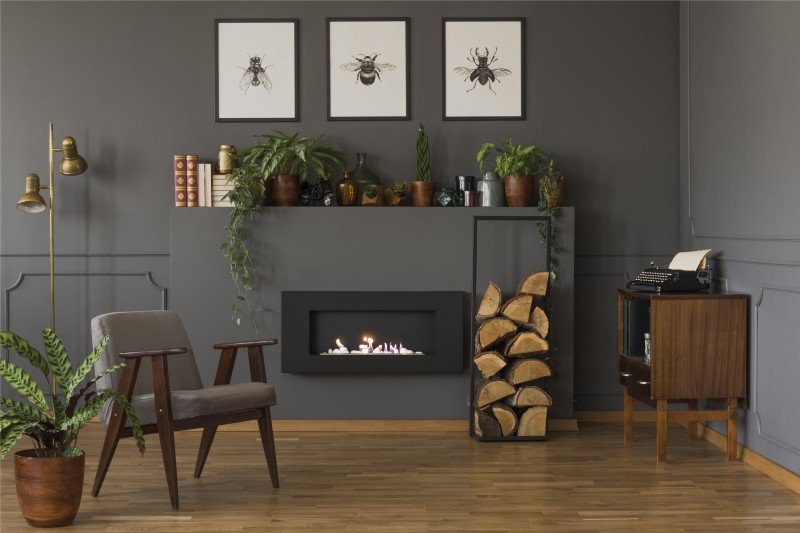This Is The Ultimate Guide To Cheap Fireplace UK
Affordable Fireplaces in the UK: A Comprehensive Guide
Fireplaces have actually long been a centerpiece of heat and comfort in homes, offering a cozy environment throughout the colder months. However, with Cozy Fireplaces of homes dealing with financial restrictions, the demand for cheap fireplaces in the UK has gotten substantial traction. This article intends to check out different economical choices, factors to think about when purchasing, setup information, and upkeep ideas to ensure longevity and safety.
Types of Cheap Fireplaces
When looking for an inexpensive fireplace, several types are available that deal with different budgets and home styles. Below is a list of some common categories of low-cost fireplaces:
1. Electric Fireplaces
- Overview: These fireplaces use electrical energy to create heat and simulate the appearance of real flames.
- Pros: No emissions, easy installation, and adjustable heat settings.
- Cons: Higher electric costs, not appropriate for all looks.
2. Gas Fireplaces
- Summary: Rely on gas or gas to produce real flames.
- Pros: Efficient heat output, immediate warmth, and often included remote controls.
- Cons: Requires gas line setup, which might incur extra expenses.
3. Wood-Burning Stoves
- Overview: These traditional fireplaces burn wood logs to produce heat and atmosphere.
- Pros: Lower running costs if wood is sourced in your area, genuine experience.
- Cons: Requires more upkeep, a chimney system, and sourcing firewood.
4. Bioethanol Fireplaces
- Overview: Use bioethanol to create genuine flames without being connected to a flue.
- Pros: Portable, simple to set up, and produces little smoke.
- Cons: Limited heat output and can be pricey if used frequently.
5. Inserts and Surrounds
- Overview: Inserts or surrounds are normally added to existing chimney areas to modernize or enhance a fireplace.
- Pros: Cost-effective methods of upgrading an old fireplace, increased performance.
- Cons: Initial setup expense might vary, and not all homes work.
Table 1: Comparison of Cheap Fireplaces
Type
Typical Cost (₤)
Operating Cost
Setup Difficulty
Aesthetic Appeal
Electric
100 – 500
Low
Easy
Moderate
Gas
300 – 700
Moderate
Moderate to Difficult
High
Wood-Burning
150 – 600
Low to Moderate
Moderate to Difficult
High
Bioethanol
200 – 800
Moderate
Easy
High
Inserts/Surrounds
200 – 1,000
Differs
Moderate
High
Elements to Consider When Choosing a Cheap Fireplace
When picking a cheap fireplace, numerous factors need to be taken into consideration to guarantee that the purchase aligns with your home's requirements and budget:
Space and Size
- Examine the size of the room where the fireplace will be set up. Larger spaces may need more effective heating alternatives, whereas smaller areas might benefit from compact electric or bioethanol designs.
Fuel Type
- Choose in between electric, gas, wood, or bioethanol based upon accessibility, personal choice, and local policies concerning emissions and safety.
Installation Requirements
- Consider whether the fireplace needs comprehensive installation work, such as venting and chimney building and construction, which can substantially increase costs.
Cost of Operation
- Calculate the continuous fuel or electrical power expenses to keep warmth throughout the winter season.
Visual Design
- Select a fireplace that complements the existing design of your home, whether modern, traditional, or rustic.
Upkeep Tips for Your Fireplace
Once a cheap fireplace is set up, correct maintenance is vital for security and longevity. Here are some important upkeep ideas:
- Schedule Annual Inspections: For gas and wood-burning fireplaces, it's important to have a yearly assessment to inspect for gas leaks or obstructions in the chimney.
- Regular Cleaning: Dust and keep electric fireplaces and clear out ash from wood-burning stoves to prevent fire threats.
- Proper Fuel Storage: For wood-burning ranges, shop fire wood in a dry area to make sure effective burning and avoid mold growth.
- Usage Quality Fuel: Always use suitable fuel for gas and bioethanol fireplaces to avoid excess soot and emissions.
- Set Up Carbon Monoxide Detectors: For gas or wood-burning designs, install detectors to ensure that any leak of hazardous gases is rapidly determined.
FAQs
1. What is the most inexpensive type of fireplace?
Electric fireplaces are usually among the most budget-friendly alternatives, using a variety of costs that can fit most budgets.
2. Can I set up a fireplace myself to conserve money?
While some electric and bioethanol fireplaces can be easily established without professional aid, gas and wood-burning designs normally need setup by a certified professional to make sure security.
3. How long do electric fireplaces last?
Electric fireplaces can last for many years with correct care, normally around 10-15 years, depending on use and the quality of the unit.
4. What is the most effective fireplace?
Gas fireplaces tend to be the most effective, offering instant heat with regulated emissions.
5. How do I know if my fireplace is safe to use?
Routine assessments, proper cleansing, and making sure that there are no clogs or leaks can help preserve security in any type of fireplace.
Discovering a cheap fireplace in the UK does not imply compromising on design or security. With a wide array of options readily available— from electric to wood-burning models— house owners can delight in a warm and welcoming atmosphere without breaking the bank. By understanding the various fireplace types, considering essential aspects before making a purchase, and maintaining the fireplace properly, people can invest wisely for many years of enjoyment.
